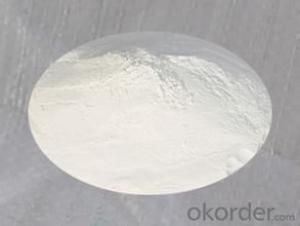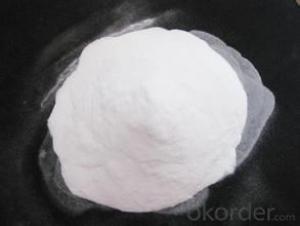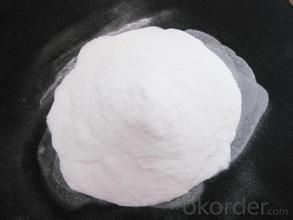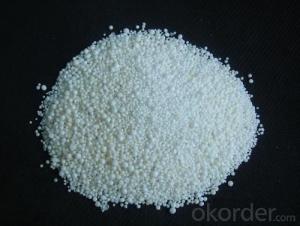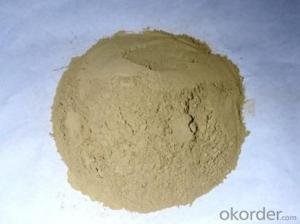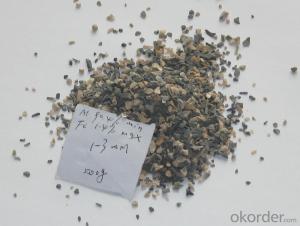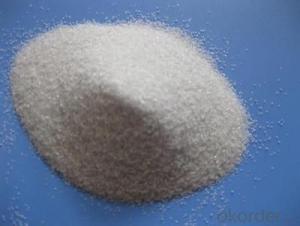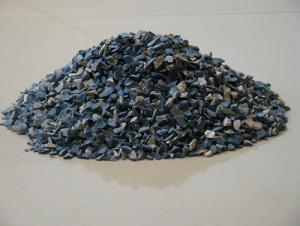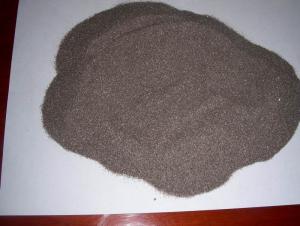Raw Materials for Refractory:Abrasive White Fused Alumina (WFA) for Sand Blasting 180 Mesh
- Loading Port:
- China Main Port
- Payment Terms:
- TT OR LC
- Min Order Qty:
- -
- Supply Capability:
- -
OKorder Service Pledge
OKorder Financial Service
You Might Also Like
Packaging & Delivery
| Packaging Detail: | 25kg/plastic bag, 1mt/jumbo bag or as you require |
| Delivery Detail: | within 7 days after sign the contract or your deposit |
Specifications
white fused alumina
Direct Manufacturer
lapping & polishing media
Ceramic grinding wheels
180 mesh abrasive white fused alumina (WFA) for sand blasting
White Fused Alumina/ WFA
White Fused Alumina, a kind of high-grade refractories, was made from the high quality alumina by melting above 2000 in the electric arc furnace and cooling. It is white with the main crystal phase alpha-Al2O3.The white alumina produced in titling electric arc furnace has the advantage of high bulk density and low porosity and the volume stability and thermal shock resistance can be improved.
Advantages
Flexible price policy
Equipped full line of test method.
Brilliant produce&supply&delivery ability
We passed the certification of ISO9001:2000
White fused alumina has Al2O3 content 99% min
All products will be supplied according to customers different requirement.
The laboratory is certified by government Inspection Bureau, that assures its quality stability.
Technical Data:
Application | specification | major chemical content % | |||||
AL2O3 | Na2O | SiO2 | K2O | Fe2O3 | |||
abrasive | F | 8#-60# | 99.5min | 0.26max | 0.08max |
| 0.06max |
60#-100# | 99.5min | 0.26max | 0.09max | 0.06max | |||
120#-150# | 99.5min | 0.26max | 0.10max | 0.06max | |||
180#-220# | 99.5min | 0.26max | 0.12max | 0.10max | |||
230#-800# | 99.3min | 0.32max | 0.15max | 0.10max | |||
1000#-3000# | 99.1min | 0.35max | 0.18max | 0.10max | |||
refractory | Section sand | 0-1mm | 99.5min | 0.29max | 0.30max | 0.02max | 0.06max |
1-3mm | |||||||
3-5mm | |||||||
5-8mm | |||||||
10-20mm | |||||||
0.3-1mm | |||||||
0-0.3mm | |||||||
1-2mm | |||||||
0.5-1.5mm | |||||||
Fine powder | 100#-0 | 99.0min | 0.40max | 0.30max | 0.03max | 0.20max | |
Moh's hardness | ≥9.0 |
true density(g/cm3) | ≥3.95 |
propotion | ≥3.6 |
porosity | ≤8.5 |
As refractoriness
White Fused Alumina is the main starting material to produce high-grade unshaped and shaped refractoriness and is widely used in the field of iron-steel industry,ceramics,petrochemical industry etc. It is the ideal material to produce the unshaped refractoriness such as large ladle castables,medium and high grade BF trough castables,gunning material,pre-cast shapes and is the main material to produce alumina products such as corundum bricks, corundum and mullite-corundum sagger,refined porous plug bricks, monolithic lance composite nozzle, lining material for high temperature industrial furnaces,etc.
As abrasives
White Fused Alumina can be used as consolidation & coating abrasives, wet or dry sprayed grit, suitable for ultra-precise grinding and polishing in the crystal and electronic industry and can be used to produce high-grade refractoriness. It is suitable to machine high stiffness &high tensile strength materials such as chilled steel, alloyed steel, high-speed steel, high carbon steel, etc. In addition, it can be used as catalyst, insulator, precise foundry sand, etc.
Size available:
Abrasive tool: F10-F220,F230-F1200;P12-P220;
Refractory : 0-1mm,1-3mm,3-5mm,5-10mm;100mesh,325mesh;
Other size is available as required;
Packing:
25kg/bag,40bags/big bag;
1000kg/big bag;
1000kg/big bag with pallet packing;
Other packing is allowed as required.


- Q: what's the standard of fireproofing material?
- Class A1 is divided according to the combustion performance of GB8624-2006 building materials and products. Specific technical index requirements are: 1, the temperature rise ≤30 degrees;mass loss rate ≤50%; combustion duration time is 0; 2, main components, overall products, gross calorific value of external secondary components ≤2.0MJ/kg; any inner secondary component ≤1.4MJ/kg; (there are difference between homogeneous and non-homogeneous). Z802 building materials noninflammability testing furnace has to be used for testing technical indicators mentioned in test 1, using Z805 building materials combustion heat value to test technical indicators mentioned in test device 2.
- Q: Which brand of thermal insulating refractory is good?
- The most famous is the dragon, Morgan, Luyang, which are good at making ordinary thermal insulation materials and whose products are cheap but quality. Refractories are non-metallic materials with good resistance against thermal shock and chemical erosion, low heat conductivity coefficient and expansion coefficient. It requires high temperature resistance in nature. It is difficult to transport suc materials in silicious thermal insulation board production base. Silicious thermal insulation board is a kind of thermal insulation material during casting process. Raw materials are non-porous refractory?aggregate, porous refractory?aggregate, organic fiber and inorganic fiber.
- Q: How much is the content of boron carbide in refractory material?
- furthermore, aluminite powder costs only ?20,000/ton, and the addition is only 0.1%—2%, or just none; while boron carbide costs ?50,000/ton.
- Q: How to count the construction costs of refractories?
- In winter, the temperature of the the fire-resistant masonry, fire-resistant plastic, sodium silicate, phosphoric?acid castable should be maintained above 5 ℃. Usually greenhouses in which heating facilities are installed to maintain the appropriate temperaturere for the construction environment should be erected in refractory masonry. The temperature around the construction site of the industrial furnace and refractory masonry shall not be lower than 5 ℃.
- Q: Does the refractory material used in steelmaking all refer to refractory brick?
- Besides refractory brick, it also refers to unshaped refractories like fire clay and castables.
- Q: What substitutes are available for high-end refractories in addition to zircon sand?
- The composite sand powder can effectively replace zircon sand, with the same operation process, less operation time and environmental protection
- Q: What is the new fireproofing standard of external wall thermal insulation materials?
- The new national standard "Fireproof? Specification of Building Design" (GB50016-2014) has been issued, it will be carried out from May 1, 2015. Compared with "Fireproof? Specification of Building Design" GB 50016-2006 and "fire?safety?rules of tall buildings design" GB 50045-95 (2005 edition), the major changes of new standard is the following: 1. It has combined with "Fireproof? Specification of Building Design" and "Fireproof? Specification of Tall Buildings Design", and has adjusted incompatible requirements between two standards, and has unified the classification of residential buildings in accordance with the building height; 2. It has increased two chapters including the fire-fighting rescue facilities and wooden structures, and has improved the requirements for fire fighting and rescue, and standardized the fireproofing requirements of wood construction; 3. Additional requirements for the fireproofing requirements of building external insulation system; 4. The fire-fighting equipment is written in a separate chapter and improve relevant contents; cancel the design requirements of fire water supply system and smoke control system, and they are regulated by the relevant national standards; 5. appropriate increase in the high-rise residential buildings and fireproofing technical requirements for high-rise civil building whose height is greater than 100m; 6. add the fireproofing requirements used by covered pedestrian during evacuation; adjust and add designers density of construction materials, furniture, lighting shops and exhibition hall; 7. add the fireproofing requirements of underground warehouses, logistics buildings, large combustible gas tank (zone), ammonia storage tanks, LNG storage tank, and adjust the fire?separation distance of liquid oxygen tank; 8. improve the relevant requirements to prevent vertical or horizontal spread of building fire.
- Q: Why should graphitic refractory materials be used now that graphite can burn?
- C is inactive in nature. Carbon will not burn unless the temperature is about 2000℃, so it can't be lit generally. Coal can be lit because it contains other combustible substance which ignite carbon indirectly. While graphite, carbon black, is more pure and dense than coal., so it is hard to oxidize.Their molecular structures are also different, just like diamond is harder than graphite.
- Q: What is the quote of fireproof and soundproof materials used in KTV?
- acoustic material, aluminum foil glass wool, sound-deadening material, glass wool, cinema / KTV dedicated glass wool: The classification of glass fiber products: The category of glass wool felts: The level of insulation cotton: A-level brands: New applications: The origin of GB/T13350-2008: The coefficient of thermal conductivity(room temperature): 0.035 bending at low temperature≤: 0.02 elongation at break: ≤80kPa flexure strength: ≤120kpa Compressive strength: ≤150kpa application temperature: 700 Core material: The shape of glass wool: Fibrous shape: Coil Specifications: Complete quote is 23 Yuan per cubic meter. glass wool board, KTV sound insulation core material: The shape of glass wool: The level of rectangular glass wool: A-level non-combustible brands: Kunnai material: The origin of glass fiber: Guangzhou, Shijiazhuang, Wuhan, the quote there is 8.8 Yuan per cubic meter.
- Q: What is the fireproofing requirements of external wall thermal insulation materials?
- in the 2011 and 2012 revised version of "Fireproof? Specification of Building Design" in China, the external insulating layer of above 50 meters (approximately 16 layers) of the housing must use the level A material. The latest draft for approval is not so strict, above 100 meters (about 33 layers) only use level A material. The manuscript of "Building Regulations" is also regulated building's external wall thermal insulation materials in the crowded places should be level A. Except the residential buildings and the buildings in the crowded places, the height of other buildings is greater than 50 meters, combustion performance of insulation materials should be level A; the height buildings is greater than 24 meters but not more than 50 meters, combustion performance of insulation materials should not be lower than level B1. "Building Regulations" manuscript should relax the rules on the aspect of protective coating in level B1 and B2 insulation material. The outer of level B1 and B2 level insulation material must use incombustible?material as protective coating, its thickness is changed from the original 10 cm to 5 cm. Given certain conditions, I feel you can use TDD exterior wall thermal insulation decoration integrated rock wool board for construction, which is level A fireproofing with a short construction period and good thermal insulation properties. I hope I can help you!
Send your message to us
Raw Materials for Refractory:Abrasive White Fused Alumina (WFA) for Sand Blasting 180 Mesh
- Loading Port:
- China Main Port
- Payment Terms:
- TT OR LC
- Min Order Qty:
- -
- Supply Capability:
- -
OKorder Service Pledge
OKorder Financial Service
Similar products
Hot products
Hot Searches
Related keywords
